#sparkhackathon
Explore tagged Tumblr posts
Text
CS in the Learning Village - January Highlights
Because of a scheduling snafu, I caught up with 2nd grade to wrap up Techmas activities. They explored circuits with the MakeyMakey, trying out different materials to light an LED. Along the way, they discovered what was conductive and what was not. Turns out feet and flowers are conductive!

Ms. Corbin's third grade class was looking for a CS challenge, so they created musical instruments with MakeyMakeys.

3rd grade started exploring Bitsbox, a platform for creating apps that actually has them type in Javascript-type code. We talked about how learning syntax in coding is a lot like learning grammar rules and punctuation in English.

4th grade continued working on their math games for 2nd grade project. We took a page from the 7th grade experience of creating math games in December and played some of the games created by 4th graders last year. Students shared “I like” and “I wish” observations about them and then came up with a list of "must haves" for their games.

I've got a 6th grade FABlab group that is exploring computer science. We started with a MakeyMakey game controller challenge. Next they did some interest mapping, to discover how their interests might intersect computer science. There’s a wide variety of interest!

I spent a lot of time in January prepping for the Spark Hackathon. That involves recruiting sponsors, mentors, workshop facilitators, problem statement presenters and students. I also work with Zach Minster and the student organizers to layout the plan and responsibilities for the event. The Meet & Greet was held at a gorgeous, new venue this year, Vault VA. More hackathon news will be shared in the February Highlights.

1 note
·
View note
Text
Spotlight: Viv Shields
Each month we spotlight a woman or girl in tech who inspires us. This month we are highlighting Viv Shields. Viv is a junior at St. Anne's Belfield School and a Tech-Girls volunteer.
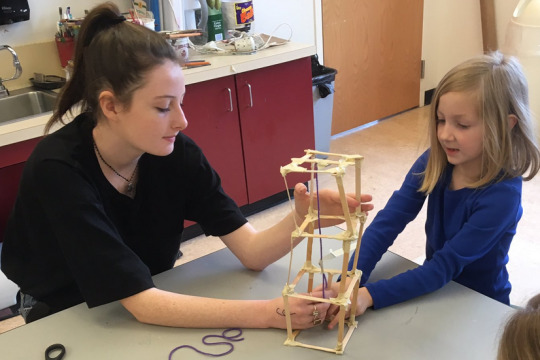
How do you work with technology today? I use technology in my CS class in order to learn more about it. I also use it in places such as Hackathon to help solve problems in the local Charlottesville community.
What drives your interest in technology? I think its so important to understand how technology works, as it is our future.
What do you remember about your first coding experience? I remember doing a project in my computer science principles class my freshman year. I was so confused and didn't understand why I couldn't figure it out. After much more experience, I know that this is just part of the process of problem solving.
What was your pathway to working in technology? I started taking computer science because none of my friends wanted to. I knew nothing about the class. I was excited to see the class wasn't just coding and that I would learn the valuable skill of problem solving.
Why is it important to get more girls and women interested in technology? It is so important to break the stereotype surrounding the field of computer science, which is, it's a boy's subject. Problem solving is a significant part of life and learning it in early education is so important! It was so valuable to see girls problem solving at Girls' Geek Day. It was interesting to see the physical and emotional differences between boys and girls when solving a problem. For these girls, solving the problem in front of them almost seemed relaxing. As for most younger boys, it's more of a frazzled energy when solving a problem.
What most excites you about the future of technology? Education about technology is what excites me the most! The developing technology all includes the concept of problem solving, looking at new ways to solve a problem.
Who inspires you to pursue your passion? So many people inspire me, I can't choose one! Seeing people pursuing their passions and changing the world for the better is so inspiring to me. Especially when it's obvious that what they're doing is making them happy.
1 note
·
View note
Text
Tech Activist: Superhero-in-Training
I had the amazing opportunity to give the Sunday Spotlight talk at #VSTE17 this year. Here’s the transcript.
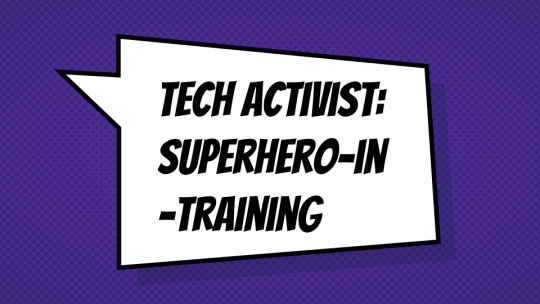
Hello, my name is Kim Wilkens and I’m a tech activist. I wasn’t always a tech activist. I used to just really like tech and I worked in tech, but I didn’t see a need to “fix” anything or advocate for change. Let me tell you a story.
I have always loved tech. It started with the TRS-80 my dad brought home when I was in high school. Sure, the games were fun, but I was never as good as my brother at those. What got me excited was learning BASIC programming and being able to type my papers faster than anybody else I knew. I started college as a math major. I happened to take an intro to computer science course as an elective and I fell in love with being able to take control of a computer and make it do my bidding.
I started working at IBM as a co-op during college and then was hired after graduation. I was a very ambitious young woman and very early in my career I started looking for opportunities to get into management. I was lucky to find a female mentor who took me under her wing and helped get on the first rung of the corporate ladder.
In 1998, I had my son. My grand plan was be back at work after my 6-week leave, but all did not go as planned. Then we moved to Charlottesville, Virginia, I quit my job to stay at home and I became a freelance test and web design consultant.
I feel like I literally stumbled into teaching. My best friend got a gig for me setting up a computer lab at her school, then the principal there encouraged me to teach technology. I’m still not sure why I said yes or why he offered a completely untrained person the job, but I fell in love with my new vocation, especially working with middle school students.
So no, I wasn’t always a tech activist. I used to just really like tech and I worked in tech, but I didn’t see a need to “fix” anything or advocate for change. That was until I went to the Grace Hopper Celebration of Women in Computing conference. Like many of you coming to VSTE, I went there to learn about the latest tools and curricula in technology education to bring back to my school. I did learn about those things, but I also learned about a very disturbing trend in computer science education and technology careers. Can you guess what it was?

It’s that number right there. That number has haunted me since I heard it. See, I naively thought that things were probably looking up for women in technology. But instead, I learned that when I was in college was the height of women studying computer science – 37%. In 2010, the year I went to that conference, women represented just 18% of computer science graduates! And as if that wasn’t enough, I learned that pay is still unequal and that high-value and high-income jobs in the tech sector are still mostly occupied by men.
It made me so mad and sad and frustrated and I wanted to know what the hell happened. I mean, technology innovations have fundamentally changed the way we work, communicate, govern and educate, yet girls are five times less likely than boys to consider a career in technology. So what did I miss? Let’s rewind and see.
NPR’s Planet Money did a story called When Women Stopped Coding and one thing they found is that having access to these first home computers was a decisive factor in more boys pursuing and excelling at computer science than girls. Maria Klawe, president of Harvey Mudd College and champion for increasing the representation of women in tech, came to a very similar conclusion that she shared at a Grace Hopper conference. She believes that many of the stereotypes we’ve got in computing now came about when PCs found their way into the home and schools. The first games were shooting games because they were the easiest to create with the limited resources of the early PCs. That grabbed male interest and they grabbed the computers. So a big thank you to my dad and brother for not locking me out of that clubhouse!
I started college as a math major, but an encounter with a math professor turned me off that subject. I went in with a problem and was told this was something my whole gender struggled with. Seriously dude, isn’t this 1984? I went to a small liberal arts college, so there weren’t a lot of math professors to choose from. Luckily, I had taken that CS course as an elective and based on that experience I changed my major to computer science.
When I started studying CS, all my professors and most of the students were male. When I started working at IBM, a majority of my co-workers were male. The few women in leadership positions seemed to approach their rise upward like most of the men - looking ahead, but not looking back. Luckily I found a female mentor. Against the advice of the mostly male managers, I left development to work with her in publications (most definitely not seen as a step up). Within 18 months, I became manager of the publications team (younger than all my employees). I soon added some developers to the team and eventually became a release manager responsible for all phases of the product development process for a major product update.
For about a dozen years, I had a thriving career at IBM. After being a release manager, I became a product planner which opened up the world to me as I got to travel all over the place to spread the good word about our product. My final job at IBM was a test manager for the game development division. Yes, it turns out you can earn a living playing video games. However, I was soon to become another troubling statistic about women in tech - that after about 12 years, approximately 50 percent of women leave their jobs in STEM fields—mostly in computing or engineering. Just to put that in perspective, that is twice the quit rate of men leaving tech.
By this point, I finally began to sense that things were not right with the tech world. Here’s what I wrote in my blog when I turned 40: “For several years, I was humming along quite nicely in my feminist cause, but then I had a child, left corporate America, turned 40 and had a huge identity crisis. I had done well in a man's world, but now I found myself in the world of motherhood. How was I supposed to excel at something I had no training for? What was happening to my feminist agenda? I thought I was helping to pave the way for the women after me to be treated as equals, but instead I was just playing by the rules of corporate America and they no longer seemed adequate for my life. I felt like a rebel without a clue.”
Needless to say, what I learned at the Grace Hopper Celebration of Women in Computing Conference really rocked my world! If you are familiar with the Hero’s Journey, this was definitely my “call to adventure” moment! At this point, I could refuse the call or become a reluctant hero.
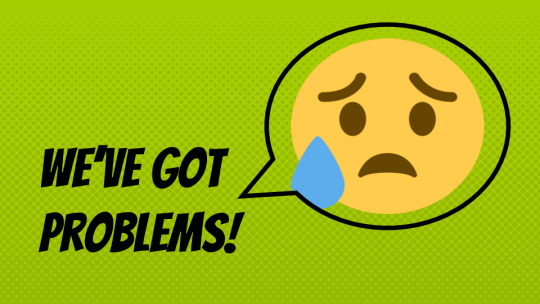
So that’s the beginning of my story, but I wonder what your story is or what your students stories are? Where are we all on our hero’s journey?
Because, let’s face it, there’s no shortage of problems that need solving. And I believe those solutions will largely involve some sort of technology.
This past October, I went on my third pilgrimage to MozFest in London. MozFest is an annual “tech” conference that Mozilla puts on, but it’s really hard to describe because it’s different that any other tech conference I have ever been to. This year it was a space where internet health issues and the larger implications for society were not only acknowledged, but actively being addressed by a diverse, committed and growing group of people. There are 5 key components of internet health that Mozilla is working on and there’s some good news and some bad news:
Privacy & Security: The Internet only stays healthy if we trust it as a safe place – to explore, transact, connect, and create. Our privacy and security online is under constant threat.
Good news: Hundreds of millions of people are taking charge of their personal Web experience by installing ad-blockers.
Bad news: 91% of adults agree that consumers have lost control of how personal information is collected and used by companies.
Openness: The Internet was built on the promise that any one of us might create the next big thing. But in order to keep creating, imagining, and reinventing our future online, the building blocks of the Web must be open to all.
Good news: There are now an estimated 1 billion Creative Commons-licensed works online that encourage reuse, including texts, photos, and music.
Bad news: People are getting cut off from other viewpoints because of the digital bubble they are living in.
Decentralization: The Internet owes much of its success to openness: its open, shared structure has made it easy for everyone to build, surf, and thrive on it. But a few big companies are closing in, closing doors, and creating walled gardens that concentrate their ownership and control of the Web.
Good news: As of December 2016, 47 countries currently have laws in place to protect Net Neutrality.
Bad news: On December 14, the FCC will vote to replace current rules enforcing Net Neutrality.
Digital Inclusion: The more voices, perspective, languages, and people contributing to the Web, the richer the experience for everyone. But the whole Internet is not yet accessible, welcoming, and safe for all.
Good news: Wikipedia continues to be a free fountain of knowledge to the tune of 16 billion pageviews a month in 284 languages.
Bad news: 73% of Internet users have seen someone harassed online and 40% have personally experienced it.
Web Literacy: People everywhere should have the knowledge they need to tap into the full power of the Internet – and use it to make their lives and the world better. This means everyone needs to be able to read, write, and participate online.
Good news: The growing trend towards integrating coding into the core curriculum across the U.S.
Bad news: 82% of American middle-schoolers assessed couldn’t tell the difference between an ad labeled “sponsored content” and a real news story on a website.
That’s just tech-related problems. What about all the other problems? Addressing climate change, equal access to education, eradicating poverty. We live in a world with a lot of problems, but we also live in a time with powerful technology tools to help us create solutions. As technology educators, we possess a superpower, the ability to inspire the next generation in technology.
“With great power comes great responsibility”. That may be a line from a comic book superhero’s uncle, but it’s no less true in reality. How do we super empower students and teachers to tackle these real-world problems and wield their technology powers for good? I’ll share some things I’ve learned as a superhero-in-training working with students and teachers at St. Anne’s-Belfield school, Tech-Girls and beyond.
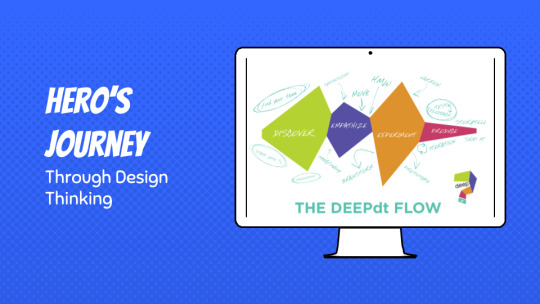
First, I want to share a framework that has been super helpful on my journey. It’s the Design Thinking process. It’s a way of looking at problems from the point of view of those it affects and iterating on solutions. I first learned about the Design Thinking alongside high school students in the Bio-Med Tech-Girls program. More on that story later. First, what is design thinking?
As I was preparing for VSTE, a colleague shared a version of the Design Thinking process created by the Mount Vernon Institute for Innovation specifically for use by K-12 educators and students. I am going to use it to weave the rest of my story and I hope you will consider how you can use it in yours.
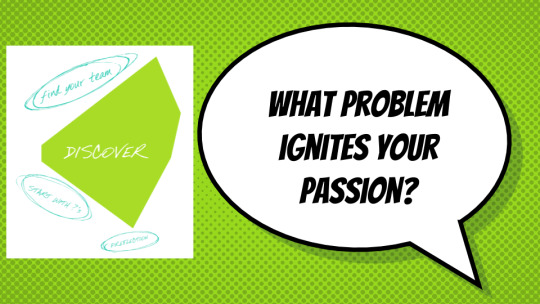
The first step is discovery.
This is the stage of researching, observing and immersing yourself in your environment. Looking for what’s not quite right? What problem catches your eye?
For instance, once I learned about the gender gap problem in tech, I couldn’t stop thinking about it. In fact, my family will tell you I became kind of obsessed with it. I would talk with: family, friends, colleagues, teachers, students, strangers on twitter, pretty much anywhere and with anyone who would listen to me. When I went to get my Master’s in Education, I bent any project I could toward studying this problem. I discovered so many things.
What’s the problem?
So I’m wondering what problem is haunting you? Maybe it’s something you are already working on or passionate about or maybe it’s been a thought lurking in the back of your mind. Whatever it is, it may seem too big, too overwhelming to even think about solving. We’re going to need some superpowers.
What are your superpowers?
After a lot of research & a lot of talking to people in the community & a lot of soul searching, I founded Tech-Girls in 2012 with a mission to empower girls to imagine and achieve their future dreams in our tech-savvy world.
In 2013, I went back to the Grace Hopper conference to learn and re-connect. At the conference, I had the opportunity to hear Anita Jones speak. Wow - was I blown away! I learned that she is a computer science legend who broke glass ceilings in academia, government and corporate America. When I got the opportunity to meet her in person, I just blurted out to her that I wanted to help solve the gender gap problem and had started Tech-Girls to do just that. She called me audacious.
I can’t tell you how empowering it was to hear that from one of my new heroes. As a part-time student, part-time teacher and full-time mother, I wasn’t feeling very audacious, but as the founder of Tech-Girls, I could do that! I decided audacity would be one of my superpowers.
I also figured out pretty quickly that making change happen involves a lot of stepping outside my comfort zone - you know, like sharing my story in front of hundreds of people. It turns out I have this really fantastic out of my comfort zone detector and when it goes off, it freaks me out! This I have discovered is another superpower. It’s the not so subtle way that one part of my brain tells me, ‘hey that sounds super scary’ and the other part says ‘so, you should probably go for it’.
If you are like me, you may not think you possess superpowers and sometimes they sure aren’t obvious. So I tried an experiment. I crowdsourced a list of superpowers at VSTE. I tweeted out requests to think about someone you look up to and share the qualities that you admire about them on a padlet. My hope is that we can use this list to acknowledge the superpowers we see in each other. Looking at it also reminds me that we’ve all got potential superpowers within our grasp, but also that we can’t possibly do this superhero stuff alone. We need a team.
Who is on your team?
To solve big hairy problems, going it alone just isn’t possible. When I started thinking seriously about founding Tech-Girls, I wrote a blog post about my idea and tweeted it out far and wide, tagging other girl-focused organizations to get their expert opinions. Through that I got support and connections with Black Girls Code, Girl Develop It, ChickTech, CyberJutsu Girls and Geek Gurl Diaries. Ironically, it was also through social media that I made some connections in Charlottesville who were interested in helping out.
I met the first member of the Tech-Girls team on a 10-miler training run - see I told you I was totally serious about sharing this problem with anyone who would listen. She was a high school junior and joined up right away. With her help, I was able to connect to a teacher who opened the door for us to host meetups at her school. Finding and engaging supporters, collaborators and cheerleaders became a critical component to making Tech-Girls work.
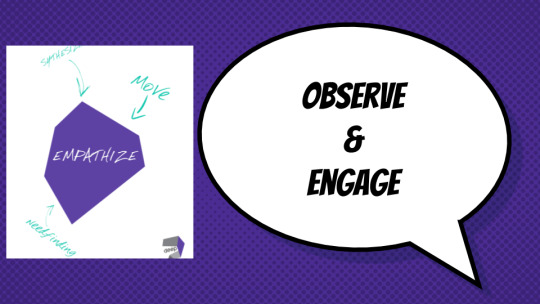
The next phase of the Design Thinking process is to empathize - to walk that mile in someone else’s shoes. I didn’t know about the Design Thinking process when I first started Tech-Girls, but I did know that I needed to understand what the problem was from the girls’ point of view. I started looking for opportunities to connect with girls and learn from them. I asked the girls what they thought the problem was and I heard things like:
there’s a lot of peer pressure to be cool & computer science is not seen as cool
computer science sounds complicated & boring
there are so many bad stereotypes out there, like showing interest in computer science means you have “no life”
I also asked them what alternate realities in their world would help address the problem:
we need to show more female role models in technology
help them understand computing is more about people than about computers
associate computer science with positive and fun subjects
This feedback was invaluable in creating programming for Tech-Girls.
In 2014, the perfect job found me - K-8 Computer Science Program Coordinator at St. Anne’s-Belfield School. Even though I was full steam ahead with Tech-Girls, I just couldn’t pass up this opportunity because I believed it would be a “proof of concept” of another avenue to help solve the gender gap problem. I just had 2 requests before signing on: Tech-Girls would still be a priority for me & we would share everything we learned on our journey integrating CS into the classroom.
A research study from the Girl Scouts reported that although 74% of teen girls are interested in STEM subjects, they don’t pursue this interest for 3 reasons:
They don’t believe other girls their age are interested in a career in STEM
They are uncomfortable being the only girl in a group or class.
They feel they have to work harder than their male counterparts to be taking seriously.
If everyone in a class is exposed to computer science, then they are all empowered to move from being technology consumers, to technology creators, collaborators and activists.
My job is to integrate computer science into all the K-8 classrooms, but I knew from previous experience, that asking a teacher if I could bring CS into a project or lesson, was asking them to take a risk. I have found that if the idea of incorporating new technology into the curriculum is anxiety inducing for an educator, add computer science to the equation and the fear factor seems to amp up ten-fold. The fear of change and not being able to keep up in the midst of rapid and rampant technological advancement is very real.
Educators are dealing with paradigm shifts brought on by technology use inside and outside the classroom. Meanwhile, youth continue to find new and inventive ways to engage with technology with or without our guidance. Acknowledging this fear and the need to work within the unknown is key. Sometimes I need a good quote to guide me through my fear. This has been my go to inspiration this past year.
“You do not need to know precisely what is happening, or exactly where it is all going. What you need is to recognize the possibilities and challenges offered by the present moment, and to embrace them with courage, faith and hope.” ~ Thomas Merton
I mentioned I went to MozFest this past October, but in 2016, I had the amazing opportunity to help plan the Web Literacy space at MozFest. Stepping into this role was definitely stepping out of my comfort zone, but I used my handy dandy comfort zone detector superpower to turn my first reaction of fear of the unknown into a sign that this new thing is exactly what I was supposed to do. I also knew that I was not on this journey alone. Being part of the Mozilla Learning Network and #teachtheweb movement has been such an amazing experience. It’s a community that cares deeply about empowering people of all ages to learn “the most important skills of our age: the ability to read, write and participate in our digital world.” Who wouldn’t want to be part of that?
I attended a planning retreat in Berlin with all these amazing superhero-type people. I found the whole experience to be a time of embracing paradox. I felt tension between hurrying up to get things done and slowing down to fully appreciate the experience; finding opportunities to collaborate and finding time to be alone; taking in new ideas and standing firm on my ideals; wanting to share my ideas with the group and not daring to let my ignorance show. The result was that out of my comfort zone feeling that is both scary and exhilarating, daunting and awesome.
Learning is also a paradox. I think this is especially true when we are talking about learning tech. Anyone in tech knows there is no keeping up with all the changes and yet, we’ve got to continue learning in order to keep creating it. As a teacher of computer science, I know that when I introduce a new tool or concept, I will not have all the answers to the questions and problems the students will encounter. In fact, the more tech I teach students, the more I become a learner alongside them. The space we created at MozFest reflected this paradox of learning and invited everyone in to embrace it.
Here’s the description of the space we created: Demystify the Web! Grab your ticket to our carnival of learning! All who enter will gain the most important skills of our age: the ability to read, write and participate in our digital world. Mozilla Learning invites teachers and learners of all ages to join our funhouse of web literacy. Embrace the unknown! Experience the thrills! Imagine and share the full potential of the web with everyone.
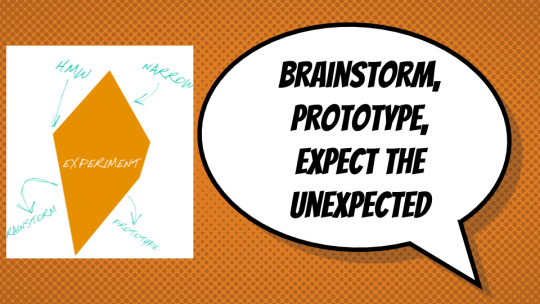
The next phase of the Design Thinking process is to experiment. As I said before, my first experience with Design Thinking was through the Bio-Med Tech-Girls program. This is a week-long collaboration between Tech-Girls, the Biomedical Engineering Department at UVA and St. Anne’s-Belfield School. This program grew out of one of my failed experiments. I had submitted a Tech-Girls proposal to the i.Lab at UVA, a startup incubator for UVA students and community members. I wanted to create web storefront of STEM curricula, workshops and services geared toward girls. My application was rejected, but one of the reviewers, David Chen, remembered my idea. David is the Coulter Program Director at UVA BME and at a chance meeting, he said he wanted to collaborate with Tech-Girls.
This past summer we held the 4th annual Bio-Med Tech-Girls program. We had 15 young women participating from 8 schools around the region. They had a broad array of interests coming into the program including math, science, engineering, biology, nursing, robotics and coding. During the program, participants got hands-on with creating technology, behind-the-scenes lab tours at UVA Biomedical Engineering and inspiration from guest speakers. They also solved a real-world problem through a design challenge like improving life for an amputee or someone with cerebral palsy.
On Friday afternoon, the community is invited to see what the girls created and it is truly inspiring to see what they come up with in such a short time-frame. The design challenge is also a highlight for the girls. A couple of pieces of feedback that first year really stood out to me:
I've never done anything like it before. All of the other engineering things I've been to always showed us other people's projects, but never got to offer us an opportunity to do a project ourselves.
You gave us a real problem and expected us to come up with a good solution, and even have us build a prototype. Normally adults don't understand younger people are able to do this stuff.
My experience learning about the design thinking process with the girls and seeing how much of an impact it made on them had me thinking that I needed to bring this experience to students at St. Anne’s. The thing about Design Thinking is that you are really putting the learning in the hands of the students and none of you really know where it’s going to end up. I knew just the teacher who would take a leap of faith with me - 8th grade science teacher Tom Weis. Together, we created the Design Thinking & Robotics project.
For this type of assignment, it’s important to identify the design constraints of the project. We brought in robotics with the Hummingbird Robotics kit which I discovered at VSTE several years ago. It’s an amazingly versatile platform that lets you build up creations around robotic components. Wo also borrowed the cerebral palsy patient profile work from Bio-Med Tech-Girls.
We kicked off day one by introducing teams of students to the Hummingbird Robotics kit in what I like to call “hole in the wall learning”. Inspired by Sugata Mitra’s “Hole in the wall” project, the idea is to get students hands-on with the kit as soon as possible and let them figure out how to test the lights, servos, motors and sensors. We gave them handouts on connecting electronics and programming them, but mostly this was a trial and error activity.
Next was working on empathy. Typically, you gain empathy for your patient by getting to know them...BUT what if you can’t interact with your patient? You can gain empathy by trying to step into the shoes of someone with cerebral palsy, so we gave them a homework assignment to try out everyday activities with limited use of their arms. Together, we reflected on the homework experience recording results on an empathy map. Next we had teams researching problems like the one their patient was experiencing. Could they find videos that show what challenges their patient might be facing? Could they find information about what solutions exist today?
Next students created need statements based on the problems their patient was facing. Each team picked one need statement to take to the next stage of brainstorming. During this stage, no idea is too crazy and the more ideas the better. Each team member come up with at least 5 ideas independently. After all ideas were on the table, teams worked to narrow them down and eventually pick one solution to take to prototype stage. Before they began to prototype, they had to draw out a design that included materials they needed as well as a description of how the solution would work.
Finally, we dumped a bunch of maker materials into the middle of the room and they got to work prototyping, testing and refining.
What they ended up with and presented on day 7 of the project was kind of amazing. Here are some examples.

The final step is to produce something, so that you can get feedback to make it better. One thing that David Chen always stresses with the Design Thinking process is that you’ve got to try out your ideas and get feedback. He’ll often have the Bio-Med Tech-Girls in the hallways at UVA trying out their ideas and asking for feedback from people they run into.
With Tech-Girls, I started out by organizing meetups for middle school girls. Those first months, I was lucky to get 6 girls in a room. It felt very slow going. In 2013, I found out about an event that Paula White was hosting called Girls’ Geek Day. Since this was right up my alley, I volunteered. That first event had 30 girls with 15 volunteers offering a wide variety of STEM-related activities. Based on my previous Tech-Girls experiences, I knew this format was a winner.
I joined Paula as a co-conspirator and we have seen Girls’ Geek Day grow with feedback and collaboration from the girls, parents and volunteers. Girls’ Geek Days are hosted once a month in elementary schools across the community. They are usually attended by 50 to 70 girls with 20+ community volunteers running activities each session. You can learn more about this program and ideas on how you might recreate in your community at our session on Monday.
One of the projects I’ve worked on that I think best represents testing and iterating on an idea is the SPARK! Hackathon. It is also a great example of super empowering kids and learning. Zach Minster, the 9-12 Computer Science Coordinator and I started the SPARK! Hackathon as a way to share the enthusiasm we have found in students who discover computer science & coding with the thriving tech community in Charlottesville. What we discovered during the planning and running of the event is that students are eager for opportunities to collaborate with others and work on meaningful projects while the tech community is eager to hear their ideas and help them create.
The hackathon happens over a weekend in January and we invite high school students from around the region to participate - no previous experience required. We call Saturday, a “learnathon” and we recruit tech professionals to come in and teach workshops throughout the day. Here are some of the workshop selections from last year: Cities that Talk, Intro to GitHub, Social Media for Entrepreneurs, Mobile Apps, Project Management, Intro to coding for the web and many more.
Saturday evening, four sponsor companies present real-world problems and the students self-select into teams to solve them. Last year the focus was on IoT (the internet of things) and problem statements included finding ways to use IoT to track patient health, using wearables to stop being distracted by your phone and helping people with multiple sclerosis manage their social interactions. Here’s a behind-the-scenes video from our first hackathon.
What I remember most clearly from that first hackathon experience was the moment we really handed it over to the students. We had recruited volunteers, organized the workshops, got companies on board to present problems, but at 6pm on Saturday after hearing the problem presentations, we truly turned it over to them. It was scary and exhilarating, daunting and awesome.
We are working on the 3rd annual SPARK! Hackathon. I really believe it is student-driven learning at it’s best! Last year, we brought students on board as mentors. This year, we’re excited to have students as collaborators in the planning and design process. They are helping us make the invitation as inviting a possible. The hackathon is open to high school students anywhere in the state, so please consider this your invitation for you and your students to join us January 27 & 28!
I realize that just doing it isn’t as easy as it sounds, but we are constantly asking this of our students, so modeling it is important. That’s why we wanted to take the SPARK! Hackathon experience and bring it to educators. So this summer, St. Anne’s hosted the Computer Science Institute for regional educators. If educators were willing to take a risk on this experience, we promised them 3 things:
an opportunity to learn and get hands on with new computer science skills and tools;
to come away from the experience with a lesson plan infused with CS to try out in their classroom
to connect with a community of educators who can provide support and guidance on their journey into computer science integration.
Our keynote speaker was Jeffrey Spies, the CTO of the Center for Open Science. Our theme was learning to learn and he was so spot on in his remarks, it actually gave me chills. He challenged us to rethink the frustration of failure.
His mantra is "Learning is frustrating. Frustration is expected. Everyone feels this way." He went on to share that “women and underrepresented minorities will face different challenges than others. They may interpret frustration more negatively.” Instead of viewing frustration with tech as a cue that we are 'not good at it’, we need to understand that it is just a normal part of the learning process. As learners, we need to fearlessly embrace the frustration of failure and believe in our ability to learn from it. This is known as a growth mindset and it leads to a lifelong love to learning in any field.
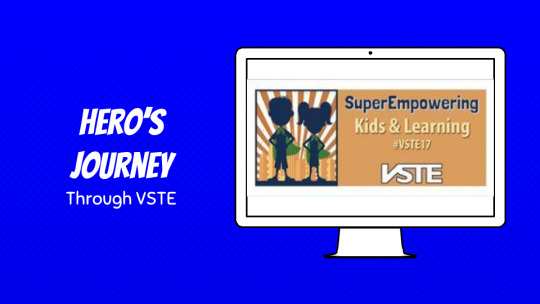
We live in a world with a lot of problems, but we also live in a time with powerful technology tools to help us create solutions. As technology educators, we possess a superpower, the ability to inspire the next generation in technology.
What I learned at the Grace Hopper Conference really rocked my world! It sent me on a journey of discovery, observation, experimentation and iteration!
I hope something rocks your world at VSTE - whether it’s an amazing educator, a cool tool or a problem that needs solving.
Embrace your hero’s journey! Acknowledge your superpower! Find your team! And then start telling your story - I can’t wait to hear it!
Resources & Credits:
Full slidedeck
Mozilla Internet Health Report
Mount Vernon Institute for Innovation: Design Thinking
Bio-Med Tech-Girls
Generation STEM: What girls say about science, technology, engineering and math (Girl Scouts)
Design Thinking & Robotics
Girls’ Geek Day
SPARK! Hackathon
CS Institute
Presentation template by SlidesCarnival
0 notes
Text
Spotlight: Camellia Pastore
Each month we spotlight a woman or girl in tech who inspires us. This month we are highlighting Camellia Pastore. Camellia is a rising sophomore at Virginia Tech, majoring in Computer Science and minoring in Math and PPE (Philosophy, Political Science, & Economics). She stumbled onto computer science in high school, and fell in love with how it combines creativity and problem solving.

How do you work with technology today? This summer, I am working for WillowTree Apps (which has its HQ here in Charlottesville!) as a Software Engineering Intern. I am an iOS developer, which means I am helping to make iPhone apps for WillowTree client companies. During the school year, I help plan two hackathons and serve as a representative from the VT College of Engineering to the Dean of Engineering.
What drives your interest in technology? It seems like technology is becoming more and more intertwined in everything else in our lives. It's really exciting to feel like I have the ability to create something that could power items that people use everyday, or write algorithms that help with important decisions.
What do you remember about your first coding experience? The first program I ever wrote was a "Hello World" in Java, which I made by following exactly what my teacher wrote in an AP Computer Science class in high school. I had never thought that I would ever be able to do anything with computers, and being able to see a message pop up on-screen that I had made happen was an amazing and powerful feeling.
Why is it important to get more girls and women interested in technology? Since technology is something that affects everyone in the world, it should be created by people from every demographic. However, sadly, I think that engineering and computer science are two places where people still have a specific image of what someone in that field should look like. Many stereotypes about programmers -- dorky, never goes outside, hates being social -- makes some people with an interest in CS feel that they won't fit in. However, the power that technology has makes it imperative that people with different perspectives and life experiences work together to find more thoughtful, more creative, and ultimately better solutions.
In my first few years of programming, I definitely felt like an outsider, and I try to volunteer now to help people see that computer science can be a broad, diverse field. I've had the amazing opportunity to teach at Girls’ Geek Day, the SPARK! Hackathon, and the Summer SPARK! program.
What most excites you about the future of technology? I'm really looking forward to seeing how technology is going to continue shaping education. Immersive virtual reality or even just lectures with better animations could totally transform the learning experience and help close the gap for underfunded school districts. I hope that tech makes learning more useful and more fun for the students of the future.
What advice would you give to your younger self? Nobody knows anything. But in a good way! The wonderful thing about computer science is that the field is always changing and evolving, so there is always a lot of room to learn. I spent a lot of years being intimidated by people who talked about how great they were at coding before I realized that everyone is forever getting better at CS, and just because someone has more experience in one area doesn't mean they're smarter.
0 notes
Text
SPARK! Hackathon: Student-Driven Learning in the Real World
vimeo
Zach Minster & I started the SPARK! Hackathon as a way to share the enthusiasm we have found in students who discover computer science & coding with the thriving tech community in Charlottesville. What we discovered during the planning and running of the event the first time is that students are eager for opportunities to collaborate with others and work on meaningful projects while the tech community is eager to hear their ideas and help them create.
What we’ve learned now that we’ve run the 2nd annual SPARK! Hackathon, is that this is an experience worth repeating and sharing. Toward that end, we were very fortunate to have Mozilla partner with us this year. They helped us ground our focus in the principles of openness, accessibility, diversity and community. They also brought some awesome mentors along from Austin, Chicago, Toronto, Los Angeles and Waynesboro to give us support while taking away ideas. Here are some of the insights that they have shared about their SPARK! Hackathon experience:
Hackathons: always be learning (Link Clark, Coding4TX)
Lessons learned at SPARK 2017 (Chad Sansing, Mozilla)
Performing the Net… of Things (Robert Friedman, Mozilla Hive Austin)
We do a lot of planning and prep work to make the hackathon happen, but once it starts, we do everything in our power to hand it over to the participants. Our first year, that was a very scary prospect. What if the kids didn’t get it or they bailed or chaos ensued? None of that happened, well maybe a little chaos, but that’s what it’s like to give up control. That’s why I believe that this hackathon is student-driven learning at it’s best. We set up a framework with workshops for learning new skills and problem statements to solve, but its the students who make the decisions about what to learn, how to solve the problem and who to work with. To expand student-ownership of the event this year, we recruited some past participants to work with workshop leaders, provide mentoring to participants and to staff the new SPARK Central (an area where participants could ask questions and find/request materials), plus they also picked out the snacks:)
The SPARK! Hackathon experience reminds me that our future relies on the youth of today wielding the power of tech for good. As Mozilla hackathon mentor Link Clark reflected, experiences like these "give us the chance to lay the foundation for students to build a more just and inclusive society while generating awesome ideas and writing code." There’s really no better way to spend the weekend!
We would love to see more events like this and are thinking of starting some fringe events throughout the year that can reach even more students in our region. If you would like to start a hackathon experience for the youth in your community, we’ve shared some resources and we’d love to hear from you:
Problem Statement Guidelines
Workshop Guidelines
Mentor Guidelines
Consent & Release Form
Sample Schedule
Planning Guide
more resources
0 notes
Text
Spotlight: Maryam Alwan
Each month we spotlight a woman or girl in tech who inspires us. This month we are highlighting Maryam Alwan. She is a rising junior at Albemarle High School. Maryam is part of MESA (math, engineering, science academy) as well as the Computer Science Honor Society. She has been involved in STEM since middle school with programs such as Coder Dojo and mechatronics, a combined science and engineering class. Maryam placed in her division in the regional science fair for testing cell phone radiation, helped create a fake news detector in the SPARK! Hackathon, taught elementary schoolers about 3D-printing, and presented homemade electromagnets at the National Science Fair in D.C.

How do you work with technology today? Everyone works with technology on a daily basis, what with computers for schoolwork, phones for leisure, etc. Even if you've shunned electronics, you can't avoid technology. It's incorporated into everything we do, from turning on the lights to flushing the toilet. I currently work with it the most in my AP Computer Science Principles class, where we create apps with MIT's App Inventor and learn all about how the Internet and computers work, from the cloud and vast networks all the way down to the basic 1's and 0's and logic gates. Next year, in AP Computer Science A, I'm going to be working with JAVA.
What drives your interest in technology? Most people tend to accept things the way they are, but I’ve always had a keen interest in how things work-- especially regarding computing. My brain was teeming with questions like: How is it possible to transmit data so quickly and efficiently worldwide? What ties hardware and software together? I took AP Computer Science Principles to find the answers to these questions, and also to develop applications and code on my own. I’ve had influence from my parents, who have PhD's in engineering and science, but this desire for understanding has been around for as long as I can remember. This curiosity was especially piqued during middle school through my combined science and engineering "mechatronics" class, where we did things like 3D-printing and laser cutting, as well as worked with VR and even redesigned VR headsets. It was so cool that I could design something on a computer and have it result in a tangible, physical product. Another "epiphany" moment was when I researched and presented a testimony about renewable technologies to Dominion Power, which resulted in the installation of solar panels on the roofs of the schools throughout our county. It was then that I realized that it was possible for me, at my age, to create and make an impact with technologies.
What do you remember about your first coding experience? When I was younger, I went to Coder Dojo camps over the summer, where we primarily worked with block-based coding in Scratch. I remember not understanding why it was considered coding at the time, because it just seemed like we were making games and cartoons move. I had this idea in my head that coding was like what was portrayed in the movies, with hackers typing random symbols in (like on hackertyper.com). This year, though, I realized that it was simply an abstraction of more advanced programming languages, just like App Inventor is, and this background has actually helped me a lot.
Why is it important to get more girls and women interested in technology? Women and girls are vastly underrepresented in STEM and technology, as from a young age we are conditioned to believe that it's a field geared for males. But that shouldn't be the case-- it's not an issue of capability or intelligence, but rather one of social constructs. For example, I have a lot of friends who are very interested in computer science, but have dropped out of the class because every other person was a male, and having no friends or fellow girls there intimidated them. If we get more women and girls interested in technology as a career from a young age by showing them that it's possible and by providing female technological role models, then their participation will increase as a result. This, in turn, would promote more creative ideas and innovation, as it is proven that diversity fosters this.
Who inspires you to pursue your passion? Other women in computer science that I personally know inspire me, like graduating seniors Cami Pastore and Holly Hilten, because they've shown me that it's possible for a girl to go far in this typically male-dominated field (as shown by their NCWIT accomplishments, activeness with computer science in the community, etc.) Another example is my computer science teacher Ms. Holley, who in fact created the first computer science honor society ever and is well-known for her trailblazing of women in tech.
6 notes
·
View notes
Text
Spotlight: Anika Volentine
Each month we spotlight a woman or girl in tech who inspires us. This month we are highlighting Anika Volentine. She is in 11th grade at St. Anne's-Belfield School where she takes Computer Science Principles and was one of the student organizers for the SPARK! Hackathon in January.

How do you work with technology today? I, like most students, use technology every day to complete school work. Almost all of my assignments require me to use a computer or phone, and I always type written essays. Other than for school, I use technology to keep in touch with my friends, play video games, and code.
What drives your interest in technology? My interest in technology stems from how big of a role it plays in my life, and how little I actually know about it. I want to learn more about the things I use every day, and hopefully one day create my own piece of technology, be it hardware or software.
What do you remember about your first coding experience? About one and a half years ago, I did a computer science summer camp at STAB, which was the first experience I had with coding. I remember at first being pretty frustrated because I didn't understand what to do, but after I practiced for a few days, I fell in love. The idea that I could create literally whatever I wanted was mind-blowing to me, and I knew from then on that I wanted to pursue computer science.
What was your pathway to working in technology? From a pretty young age, I've always loved to play video games. I'd spend all my free time in elementary school playing on my Nintendo or going over to a friends house to play on their X-Box or Wii. My interest in technology began when I was in middle school and decided that instead of playing other people's games, I wanted to create my own. It wasn't really until high-school that I had the opportunity to pursue this at summer camp. That school year I participated in the Hackathon, which was what I consider to be the biggest turning point for me to pursue computer science. It was such a good experience for me to work with beginners like myself while also having guidance of people who knew how to code. Since then, I have tried my best to immerse myself in technology and computer science and to go to as many events and experiences as I can.
Why is it important to get more girls and women interested in technology? Growing up, lots of girls believe that their professional options are limited simply because they are female. A big area where this happens is the STEM field. Lots of girls show interest in computer science at a young age, but the number of female graduates in STEM is significantly smaller. We need more girls and women to be interested and to pursue tech because no one should think that they can't do something simply because they are a girl.
Who inspires you to pursue your passion? I have been lucky enough to have a few amazing teachers who inspired me to do what I love. One such teacher is Mr. Zach Minster, my computer science teacher and advisor. He emphasizes the importance of doing what you love, and not letting who you are limit that. In his class, my skills in computer science have improved dramatically through his project-based learning course. While there are overall guidelines for the projects, ultimately I am able to create whatever I want which for me provides the best learning experience.
What most excites you about the future of technology? For me, the most exciting invention in technology is Virtual Reality. I love the idea of being fully immersed in a virtual simulation or game. I am very excited to see how the technology improves and changes, and I would love to see a full-immersion type experience eventually.
What advice would you give to your younger self? Not to let anything stop me from doing what I love, and that computer science really isn't as scary as I think it is.
1 note
·
View note